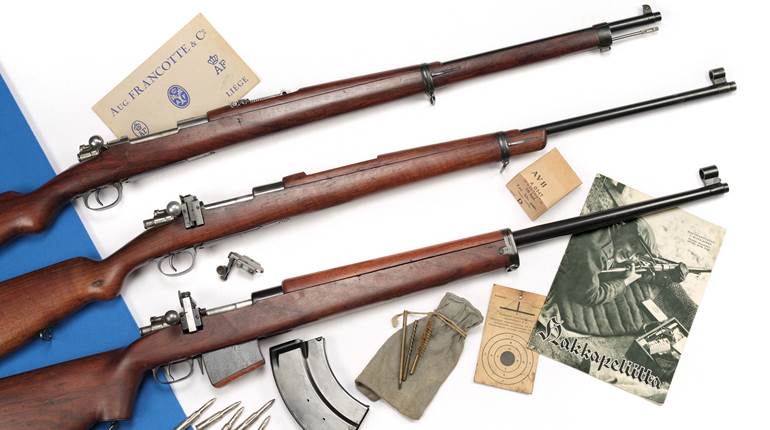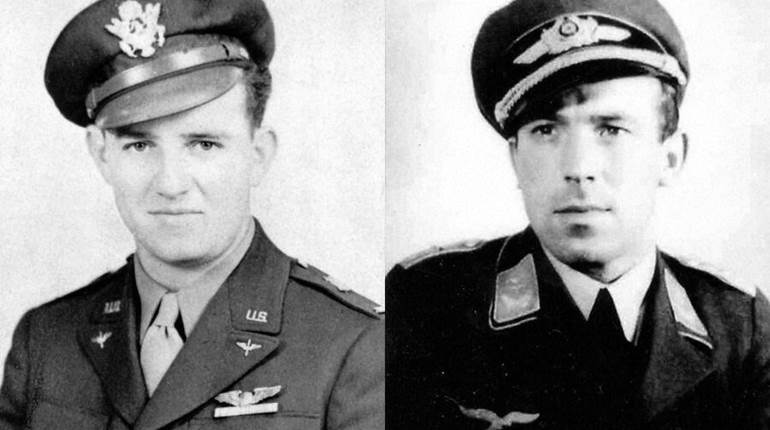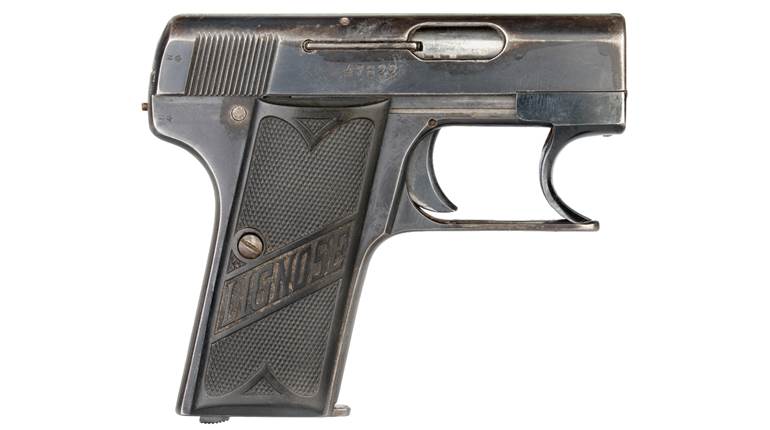
In this posed image of a sniper on the Eastern Front, the Mosin-Nagant rifle lacks the white-bandage wrap typically used as camoflage, and the shooter has a bare support hand—an open invitation to frostbite. Historical photos courtesy of the author; rifle photos courtesy of nramuseum.org.
After the cessation of hostilities in November 1918, the world’s armies began to lick their collective wounds and reassess the impact of almost five years of fighting that had resulted in the deaths of around 11 million soldiers. The map of Europe had been changed forever, and the breadth of social changes wrought by the war had yet to become apparent. However, some immediate lessons had been learned by the combatant nations. It had become increasingly clear that technology was now the master of the battlefield, with the widespread use of tanks, aircraft and ever more powerful artillery. But there was also a realization that the traditional small arms used by the infantry were, by 1918, becoming outdated, too expensive to make and frequently ineffectual.
The long-barreled rifles issued in 1914, such as the Mauser Gewehr 98, Mk I Lee-Enfield and French Lebel had given way to more practical short-barreled variants, and the manufacture of these rifles had been much simplified. Compact, carbine-size rifles were becoming increasingly commonplace. Rifles capable of accurate shooting to 2,000 yds. had proven unnecessary during the war; the average distance for combat was generally estimated to be under 200 yds., and much was at ranges no greater than 50 yds., little different from that of the Napoleonic War.

World War I had spawned new forms of small arms, such as medium machine guns, semi-automatic pistols, submachine guns and effective mortars. Despite that, there was a realization that for long-range shooting, highly accurate rifles were still very much required. The use of snipers during the war had slowly evolved from that of general marksmen—taking on opposing snipers or any other visible target—to that of scout/snipers and observers.
By the end of the war, they were being employed as specialists in their own right, providing vital intelligence as well as cover for advancing troops by dealing with machine gunners and enemy snipers. During 1918, the retreating Germans used a potent mix of snipers and machine gunners to pin down attacking Allied units, providing protected withdrawal for their own units, with little risk to themselves. These small units then melted away to re-form again a few miles farther back. By the end of the war in November 1918, there was little doubt that the age of the sniper had arrived. However, in the lean postwar years of the 1920s and 1930s, virtually no government in Europe, the Dominions or the United States wished to devote time or resources to building up its armed forces. After all, the War to End All Wars had just been fought, and there seemed no justifiable reason to do so.
There was one exception to this, and that was Soviet Russia, at the time probably the only major power to have had cause, since 1918, to seriously re-evaluate its sniping doctrine. During the war it had employed no dedicated snipers at all, and, as a result, Russian soldiers suffered grievously from the well-equipped German and Austrian snipers. In the early 1930s, the Soviet Union had embarked on a massive modernization of its armed forces, and that included sniper training. Russia had used the venerable Mosin-Nagant rifle, chambered in 7.62x54 mm R, since its introduction in 1891. Although not the most sophisticated rifle in design or construction, it was simple, strong and accurate enough for combat use to around 500 yds. The early rifles were then upgraded with a rounded receiver that simplified production, improved iron sights, a re-designed bolt and a barrel shortened to 28.7" to become the Model 91/30.
It is a curious irony that the first Mosin-Nagant sniper variants came to fruition as part of a series of technology exchanges between the Soviets and the new Nazi regime in the early 1930s. Thus, the earliest sniping models, with PE (“Unified Model”) and later PEM (“Unified Model Improved”) scopes were manufactured by Emil Busch AG, and later scopes were made in Russia in a factory equipped by Carl Zeiss. Although optically excellent, these early 4X scopes were long and heavy and their vulnerable mounting systems were easily damaged by careless handling. Russia had gained some practical sniping experience during the Spanish Civil War (1936-1939) by deploying sniper units, with the Soviets aiding the Republicans while the Germans provided material help to the Nationalists. Sniper tactics were improved compared to those of World War I, with increased deployment of snipers alongside machine gun units and more effective use of them in both attack and defense.
But Spain was never more than a sideshow in Europe, and on Nov. 30, 1939, Russia’s invasion of neutral Finland was to prove far more instructive, and much more costly. Having the men and rifles was one thing, employing them correctly was another, as Russia was about to find out.
Soviet snipers during the “Winter War” found themselves outshot and tactically outmaneuvered by the Finns, who were used to the bitter winter cold, which could drop to -50˚ F. In a curious twist of fate, the Finnish army also had its own sniper sections equipped with variants of the Russian Mosin-Nagant, Model 27 and Model 28-30 rifles. While scopes were fitted to many rifles, they often proved problematic; the temperatures caused mount screws to shear and the adjuster turrets to freeze. Reticles broke in the fearsome cold, and if the scope was kept next to the body to prevent it from freezing, its optics misted up the instant it was fitted to the rifle. Any lubricant used in the rifle mechanism turned to glue, locking the bolt firmly in place and causing cartridges to jam in frozen magazines.
As a result, most Finnish snipers preferred to use their hunting skills to get close enough to the Russian soldiers to kill using iron sights or even using submachine guns. The greatest practitioner of this was undoubtedly Simo Häyhä, a hunter by profession who stalked Russian soldiers with extraordinary skill, accounting for 505 confirmed kills. Although Russia eventually ended the war with a treaty in March 1940, it had paid a terrible price, losing around 350,000 men. Inevitably, a revision of sniper tactics followed, and to encourage marksmanship the Voroshilov Sharpshooter Badge was introduced in 1932, although it should be stressed that this was not a sniper qualification, the Sniper Award not being introduced until 1942. The deficiencies in the PE/PEM scopes and mounts were also addressed. The original mount was too high and required five fitting screws, so a lower, one-piece pattern, retained by one large thumbscrew, was adopted. In addition, a new scope, the PU, was also introduced. It was shorter-bodied and of slightly less power, at 3.5X, but lighter and incorporated simple, easily adjusted elevation and windage drums. The PU-equipped Mosin-Nagant was to remain the standard Soviet sniping rifle until replaced by the Dragunov in 1963.
Initial confrontation with Soviet snipers in the early weeks of the invasion of Russia in 1941 proved to be a demoralizing experience for the Germans. Units of snipers (to the Germans the Russians initially appeared to have a limitless number), worked cohesively and efficiently to stop advancing German columns, and the Soviets worked in large, effective teams. A Russian infantry commander wrote, “A staff car appeared, Corporal Mikhailov fired … the car ran off the road … with other vehicles behind it. When the column closed within effective range, it was met with a hail of unhurried, well-aimed accurate shots. The lead vehicle was brought to a halt and blocked the road … lorries collided with each other and piled up. The Germans needed to push several vehicles from the road to clear the right of way, but hardly had the convoy moved forward when the snipers opened fire again.” By firing and then retreating to new position, the dozen snipers caused mayhem, enabling the German column to advance only two miles in 24 hours. Indeed, it slowed them to a point where Soviet armor later caught up and destroyed them.

Many of the snipers had received only the most basic of training; Soviet doctrine was to provide very basic sniper training in rear areas, then attach a pair of snipers, called “leverets” to an experienced man, to give them on-the-spot training. Many didn’t last long enough to become experienced. At Stalingrad, two weeks was the average lifespan of a neophyte sniper. Ivor Peneshsky, who corresponded with the author for some years, was trained by Vasily Zaitsev and stated that he had 10 days of basic training behind the front lines then: “We were assigned to working sniper squads, two of us attached to an experienced sniper. We were told to watch and learn and do nothing unless we were instructed to. Our training under Zaitsev had been very good, very thorough, and we were fortunate indeed. All of the other squads became casualties by the end of the month, but we two survived.”
If there was one thing the Russians were not short of it was men, or women, to train as snipers. The only response was for the Germans to bring forward their own counter-sniping teams. Josef “Sepp” Allerberger, who became Germany’s second highest scoring sniper with 257 official kills, later commented that he was surprised at how inexperienced the Soviet snipers were. He couldn’t believe they would “… make the cardinal error of shooting from a tree without the ability of retreat or taking cover … while they were good shots, they were tactically inexperienced. Like sacks, the Russians fell from the trees.“ On one occasion, he reported shooting 18 enemy soldiers within an hour. What shocked the Germans more was the fact that a significant percentage of these snipers were women, Russia uniquely employing large numbers of female snipers.
Generally, the Mosin-Nagant, when used by a competent sniper, was capable of accurate shooting at 800 or more meters. Peneshsky said he was not up to the standard of the great snipers, but he was able to make head shots at 200 meters and guarantee a body shot, given favorable weather conditions, at 500 meters. He said his favorite targets were machine gun crews, whom he hated. “Shooting them was like shooting rats. Because of our snipers, they began to put camouflaged armored plates in front of their guns, so we had to move to the flanks to try and pinpoint them. We would get a couple of our men on their front to shoot or move about and draw their fire, and when they opened up they immediately gave away their position. The strange thing was, as soon as one went down, another would take his place. I once shot five, all head shots, all within the space of 15 minutes. They never seemed to learn.”
The Russians continued to produce scoped Mosin-Nagant rifles throughout the war, and Soviet arms plants were geared up to produce PU-equipped sniper rifles, with between 185,000-200,000 being manufactured during its service life. The Red Army, though, was also very aware that the firepower of a bolt rifle was limited, and in situations where mass attacks took place or in built-up areas, semi-automatics were preferable. They had not been resting on their laurels where this was concerned. But Soviet semi-automatic sniper rifle development and use will have to wait for another day.




































